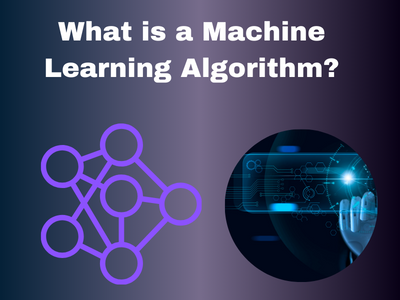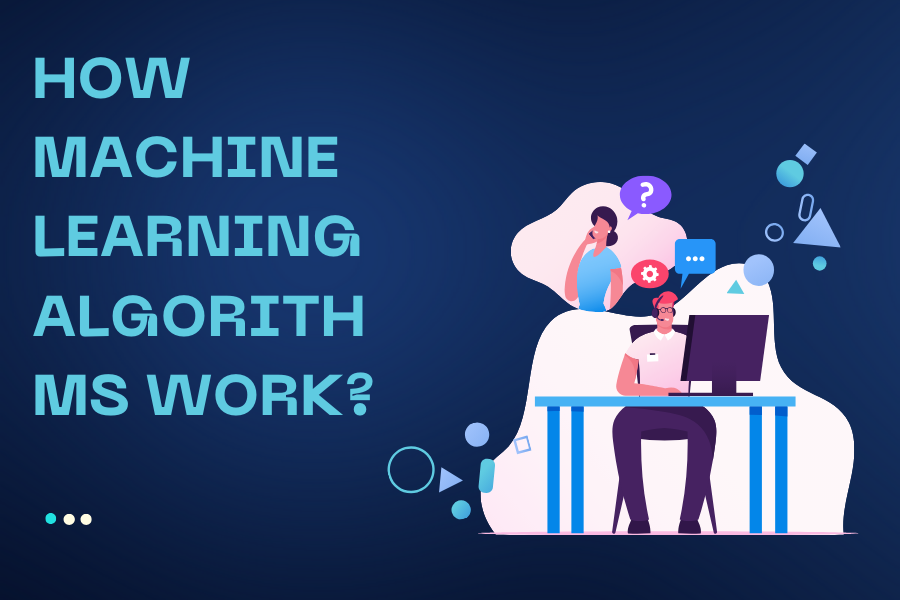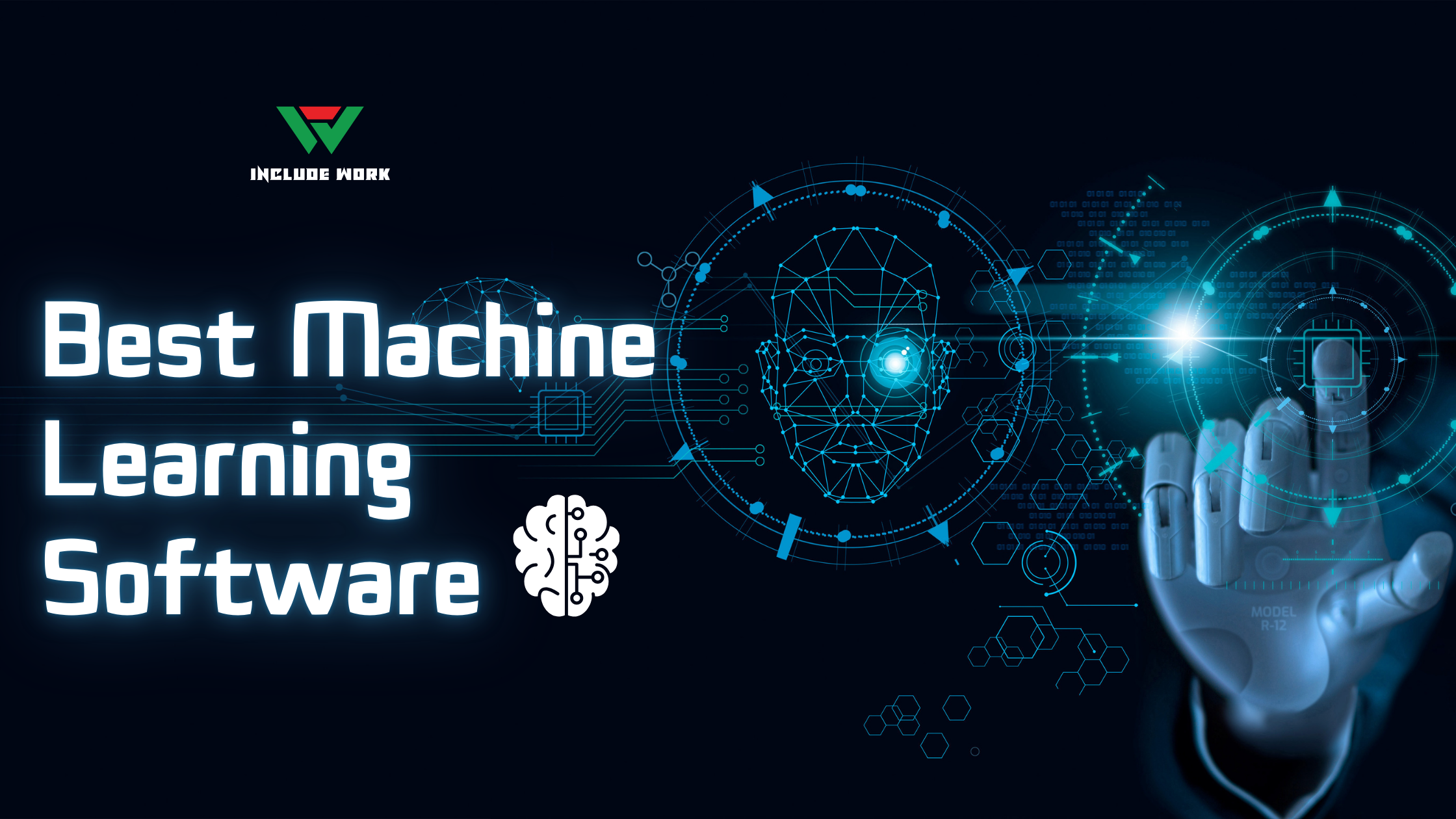Imagine you have a smart assistant at home that learns to recognize your voice better over time. Or consider how your phone’s camera gets smarter at identifying faces. Both examples show how machines can learn from experience. This learning is powered by what we call machine learning algorithms.
Table of Contents
What is a Machine Learning Algorithm?
Imagine you’re teaching someone to distinguish between apples and oranges. You’d show them examples, pointing out the differences in color, texture, and size. Over time, they’d learn to identify each fruit correctly, even when presented with new examples they’ve never seen before. A machine learning algorithm does something similar with data.
At its heart, a machine learning algorithm is a set of instructions that helps computers learn from data, enabling them to make decisions or predictions based on past experiences. Instead of explicitly programming a computer with specific rules for every decision it needs to make (like, “if the fruit is red and round, it’s an apple”), you feed data into a machine learning algorithm (pictures of apples and oranges, in this case), and it learns the patterns that distinguish one from the other.

So, when you input new data (a picture of a fruit), the algorithm analyzes it based on what it has learned and makes a prediction (whether it’s an apple or an orange). The more data the algorithm processes, the better it gets at making predictions or decisions. This ability to learn from data and improve over time makes machine learning algorithms incredibly powerful tools in fields ranging from medical diagnosis to personalized recommendations on streaming services
Types of Machine Learning Algorithms
Machine learning algorithms come in different flavors, each suited for specific tasks and kinds of data. Here’s a simple breakdown:
Supervised Learning: Imagine a teacher guiding a student through examples until the student learns to identify them correctly. Similarly, in supervised learning, the algorithm learns from labeled data. It makes predictions based on input-output pairs and gets corrected by feedback.
Unsupervised Learning: This is like giving a child a box of blocks of different shapes and letting them figure out how to categorize them without guidance. Unsupervised learning algorithms find patterns or groupings in data without any labels.
Reinforcement Learning: Think of training a dog with treats. The dog tries different behaviors and learns which ones earn it a treat. Reinforcement learning algorithms learn to make sequences of decisions by receiving feedback in the form of rewards or penalties.
Semi-supervised Learning: This method falls between supervised and unsupervised learning. It uses a small amount of labeled data along with a large amount of unlabeled data to train models. It’s like learning with a few instructions and a lot of experimentation.
Transfer Learning: This involves taking knowledge learned from one task and applying it to a different but related task. For example, knowledge gained from learning to recognize cars could be transferred to recognizing trucks.

Understanding these types gives us a glimpse into the versatility and power of machine learning algorithms in handling a wide range of tasks, from simple classification to complex decision-making scenarios.
How Machine Learning Algorithms Work?
Let’s simplify how machine learning algorithms operate, using a common scenario most people can relate to: getting recommendations for movies based on what you’ve watched before. Here’s a step-by-step breakdown:
Collect Data: First, the algorithm gathers data. In our example, this would be a list of movies you’ve watched along with your ratings or likes for each movie.
Prepare the Data: The data is then cleaned and organized. This might involve sorting the movies into categories, such as genres, or noting whether you finished them.
Choose a Model: Based on the task, a specific model is selected. Models can vary from simple decision trees (which work like a series of yes/no questions) to complex neural networks (which mimic the human brain).

Train the Model: This is where the learning happens. The algorithm analyzes the data, learning patterns such as which genres you prefer. It makes predictions, like suggesting a movie, and adjusts based on whether its predictions match your actual preferences.
Evaluate the Model: The algorithm checks how well it’s doing by making predictions on data it hasn’t seen before. This helps to ensure it’s learning correctly and not just memorizing.
Improve and Deploy: Finally, tweaks are made to refine the model. Once it’s performing well, it can be put to work—like suggesting your next movie night pick.
By iteratively learning from data, machine learning algorithms can improve over time, making more accurate predictions or decisions.
What are the 10 Popular Machine Learning Algorithms?
Linear Regression: Useful for predicting numeric values, like house prices, based on input variables.
Logistic Regression: Good for classification tasks, such as determining if an email is spam or not.
Decision Trees: Versatile for classification and regression, making decisions by splitting data into branches.
Random Forest: An ensemble of decision trees that improves prediction accuracy by reducing overfitting.
Support Vector Machines (SVM): Effective for high-dimensional data, classifying complex datasets by finding the best boundary between data points.
Naive Bayes: Based on Bayes’ Theorem, it’s great for text classification, such as filtering spam emails.
K-Nearest Neighbors (KNN): Classifies data based on the closest data points in the feature space, useful in recommendation systems.
K-Means Clustering: A powerful unsupervised algorithm for grouping data into clusters based on similarity.
Gradient Boosting Machines (GBM): Boosts weak learners into a strong one, commonly used for competitive machine learning.
Neural Networks: Inspired by the human brain, these are powerful for complex tasks like image and speech recognition.
These algorithms cover a wide range of machine learning tasks, from simple predictions to understanding human language.
Most Common Machine Learning Algorithms
While the previous section introduced ten popular algorithms, let’s narrow down to a few that are widely used across various industries:
Linear Regression: It’s everywhere. From predicting sales to estimating stock prices, its simplicity and efficiency make it a go-to for numerical predictions.
Decision Trees: Used in financial analysis, customer segmentation, and more, decision trees help in making decisions by mapping out possible outcomes and their impacts.
Random Forest: A favorite for its accuracy and versatility, Random Forest is employed in medical diagnoses, stock market analysis, and e-commerce to improve decision-making processes.
Neural Networks: With their ability to interpret image, video, audio, and text data, neural networks have revolutionized face recognition, language translation, and even self-driving cars.
These algorithms are just the tip of the iceberg but represent some of the most powerful tools in machine learning, making significant impacts across various fields.
Advantages and Disadvantages of Machine Learning Algorithms
Machine learning technology brings a lot of power, but like all powerful tools, it has its pros and cons.
Advantages:
- Efficiency at Scale: They can automate and improve tasks that are too complex or voluminous for humans to handle, like analyzing millions of transactions.
- Adaptability: They learn and improve from more data over time, making them more accurate in predictions and decisions.
- Diverse Applications: From healthcare to finance, these algorithms can be applied to a vast range of fields and problems.
Disadvantages:
- Data Dependency: Their performance heavily relies on the quality and quantity of the data. Poor data can lead to inaccurate or biased results.
- Complexity and Transparency: Some algorithms, especially deep learning models, can be complex and hard to explain, making it difficult to understand how decisions are made.
- Resource Intensive: Training sophisticated models requires significant computational resources and expertise, which can be a barrier for smaller organizations.
Understanding these pros and cons is crucial for leveraging machine learning effectively while navigating its challenges.
Conclusion
Machine learning algorithms are like the brains behind smarter technology, constantly learning from data to make our devices and applications more intelligent. From simple tasks like recommending movies to complex ones like driving autonomous cars, they’re reshaping how we interact with technology. While they come with challenges, their benefits—efficiency, adaptability, and the ability to tackle diverse problems—make them indispensable in the digital age. As we continue to refine these algorithms and manage their limitations, the future of technology looks promising, powered by machines that learn and evolve.
This exploration has aimed to demystify machine learning algorithms, making the topic accessible and engaging, steering clear of dense technical jargon. Whether you’re a curious learner or a professional exploring tech trends, understanding these algorithms opens up a world of possibilities.







I’ve been visiting this site for years, and it never fails to impress me with its fresh perspectives and wealth of knowledge. The attention to detail and commitment to quality is evident. This is a true asset for anyone seeking to learn and grow.
Thank you so much for your kind words and for being a long-time visitor! We’re thrilled to hear that you find our site consistently impressive and valuable. Your appreciation for our attention to detail and commitment to quality truly means a lot to us. It’s feedback like yours that inspires us to keep pushing the boundaries of knowledge and to provide insightful content. We hope to continue being a part of your learning and growth journey for many more years to come!